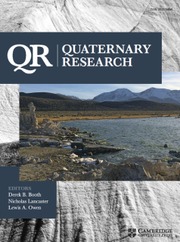No CrossRef data available.
Article contents
Effects of paleoclimatic variables on suitable open habitats for Pleistocene–Holocene megafauna in South America
Published online by Cambridge University Press: 30 December 2024
Abstract
The cause of megafauna extinction in South America remains clouded in controversy, since it took place at a time of intense climate change and almost at the same time as the initial human influx into the continent. In this paper, we aimed to assess the effects of climate change on open vegetation habitats and, consequently, on megafauna extinction in South America by using a species distribution model, fossil records, and paleoclimatic projections. In addition, we evaluated the effects of climatic variables on the distribution of suitable habitats across South America. Our results demonstrated alternating intervals of expansion and contraction of suitable areas for megafauna persistence, mainly in response to lower and higher precipitation, in the last 21 ka in all regions of South America. However, the amplitude of this oscillation was more significant in the Brazilian Northeast. In the Andean and Chaco–Pampas regions, greater precipitation stability resulted in greater stability in habitat suitability; therefore, for these regions, other factors must have predominated for the extinction of the megafauna. We therefore concluded that in the Andean and Chaco–Pampas regions, climate change was not solely responsible for the disappearance of megafauna, but in the Brazilian Northeast, it may have been decisive.
- Type
- Research Article
- Information
- Copyright
- Copyright © The Author(s), 2024. Published by Cambridge University Press on behalf of Quaternary Research Center



